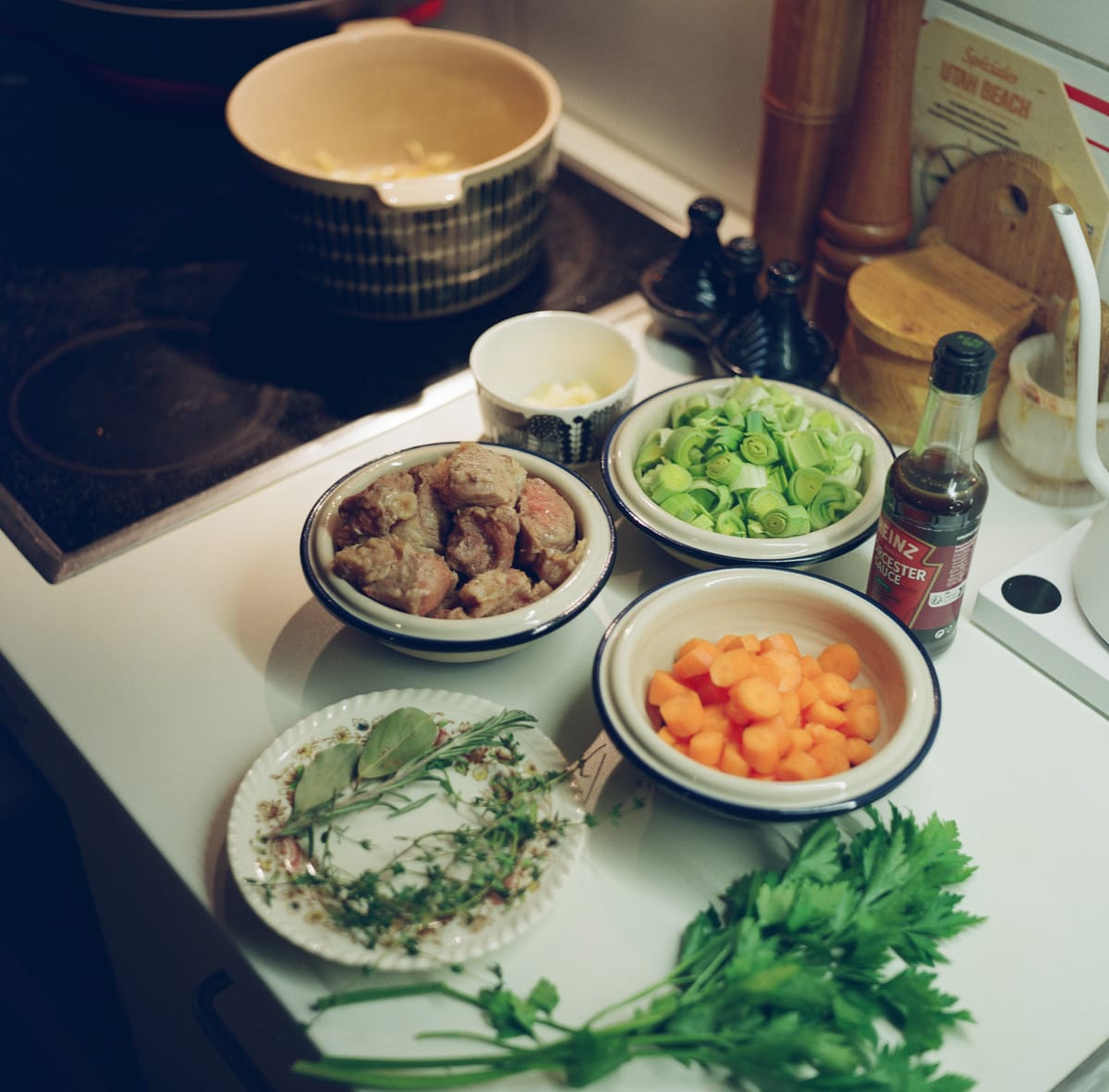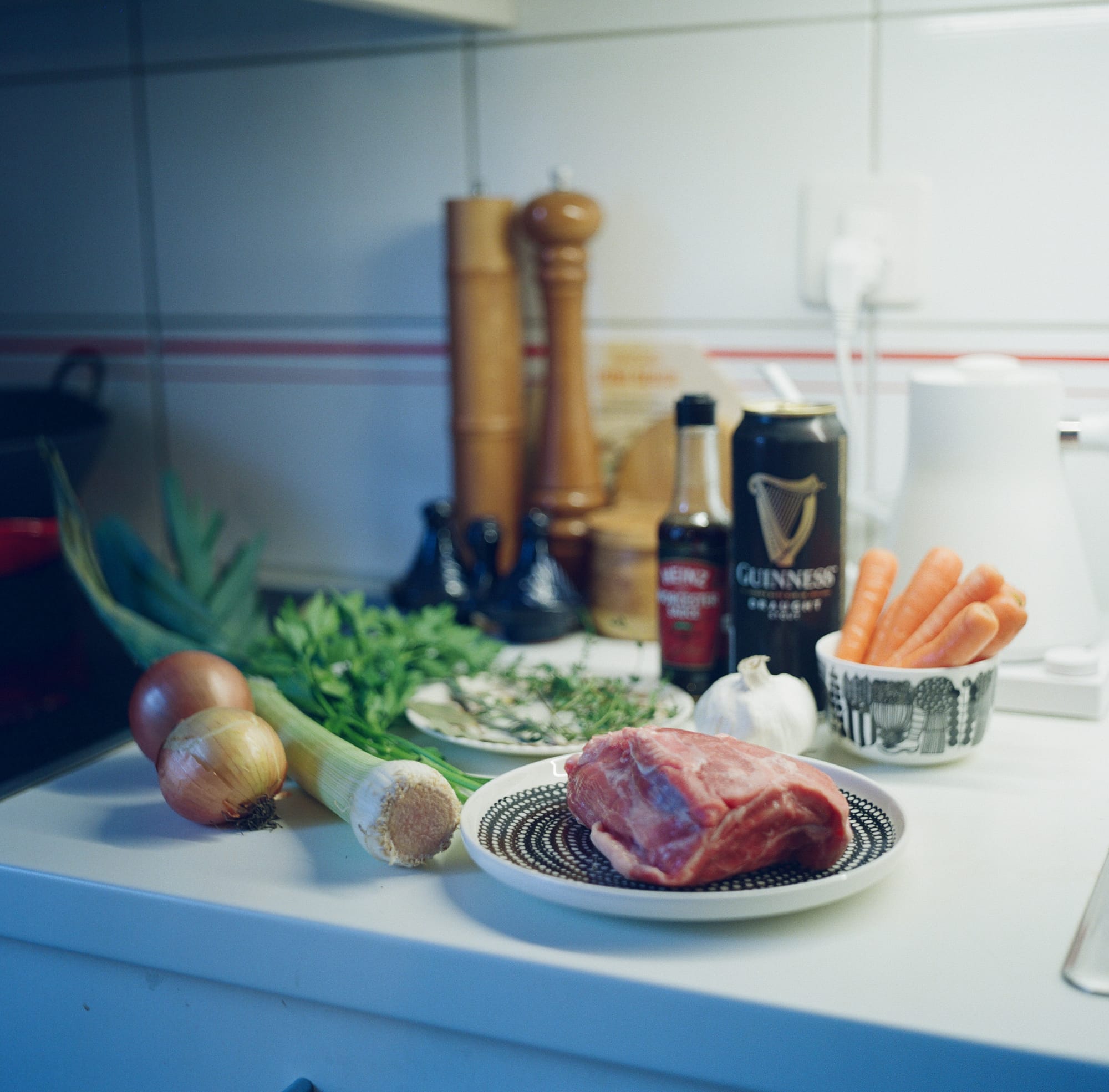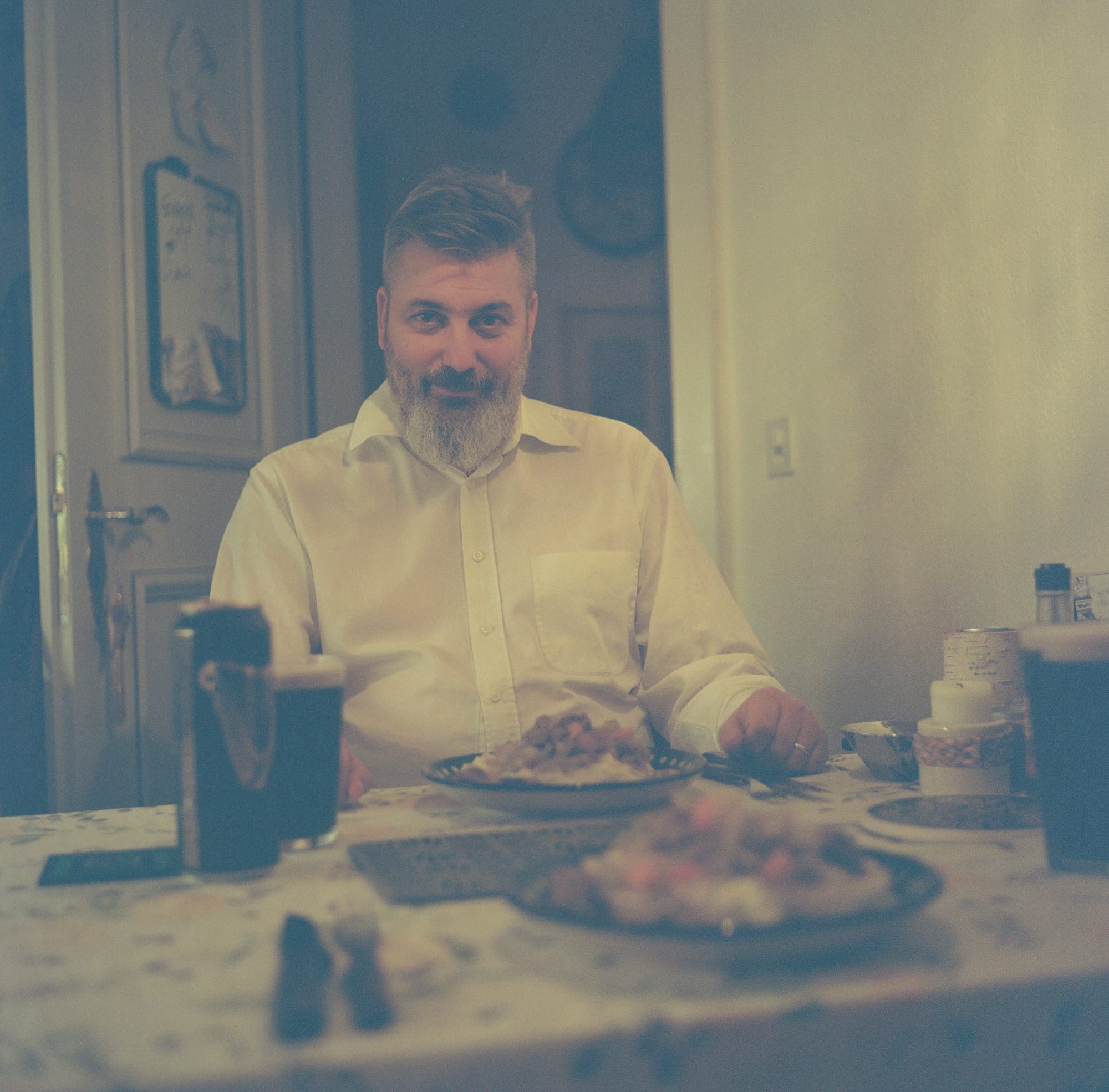What to eat IRELAND 🇮🇪 Irish stew
The dish was made originally by shepherds and rural farmers who had only a limited availability of essential ingredients on hand... Combined with potatoes, onions, and sometimes carrots or other root vegetables, the dish comes together in a single pot cooked for hours...

Irish Stew
Published December 13, 2024 · by Amanda Rivkin Häsler
Irish stew is one of these dishes without a crystal-clear origin story. It came together over time based on necessity and available ingredients. With variations for richer or poorer, it is no wonder Ireland is married to this simple dish that began as a shepherd’s stew in the seventeenth or eighteenth centuries.
The dish was made originally by shepherds and rural farmers who had only a limited availability of essential ingredients on hand. Due to the long days spent working on the farm or at pasture, something warm and filling was needed. It’s possible that for these reasons, it may have been made with goat meat initially. As the dish’s popularity grew, new meats were tried by those who could afford them, including lamb or mutton, more likely consumed by wealthier types.
Colman Andrews, the author of The Country Cooking of Ireland, told The Chicago Tribune in 2012 that “an individual farmer was more likely to have a few lambs and a dairy cow that was more useful alive than dead.”
Alan Davidson, a food historian, adds that mutton was most common in the earliest iterations of Irish stew because sheep were kept into old age for wool and milk. Older meat was most certainly not tender and fatty and required an extra-long amount of time to be both edible and tasty. Combined with potatoes, onions, and sometimes carrots or other root vegetables, the dish comes together in a single pot cooked for hours until the meat is tender and the flavors come together.
As early as the eighteenth century, Irish families with more than ten acres of land were considered wealthy. This led to an expanding diet that gave life to some of the dishes considered to be national cuisines in Ireland today. It was in this time period that a complete meal in Ireland included potatoes and villages began to have grocery shops offering more than staples for the farm and farming.

Another theory is that the origin of Irish stew is a local response to the rising popularity of other similar yet very different one-pot dishes elsewhere in Europe at the time, such as cocido in Spain or cassoulet in France. This seems less likely though given the limited interaction the humble population in Ireland at the time would have had with outsiders.
Though the potato is an obvious import from the new world, it is in North Sea waters among the populations located there that its popularity really took hold initially in Europe. The Irish staple arrived in the sixteenth century during the Colombian exchange which saw the widespread transfer of plants, animals and diseases across the Atlantic trade routes. Later it would become one of the few key essentials in Irish stew, however it would be made, given the discrepancies and variations that result from most all folk recipes from place to place and family to family.
There is little by way of documentation of old Irish recipes, though the first known recipe for the dish comes from the O’Brien family of southern Ireland in the sixteenth century, compiled by Countess of Thomond. There was an earlier recipe for an Irish stew from 1613 by Lancelot de Casteau, but it bears no resemblance to what we know as Irish stew in contemporary times. Already by the nineteenth century, the dish appears in the new world where Helen Stuart Campbell, a professor of domestic science at Kansas State Agricultural Culture had recorded a recipe for Irish stew as well.
In modern versions of Irish stew, Guinness, the dark beer, is often added as well for a sweet, caramel-like spin on the stewed flavors of meat and root vegetables. While the essential ingredients have changed little over the centuries, the great many takes that have come to be make for a great deal of variety. The dish remains hugely popular and is served in Dublin’s many pubs where it is called Ballymaloe or stobnach gaelach in Gaelic.
Erin go bragh!

Recipe
Ingredients:
500 grams of lamb shoulder
Maldon salt
Pepper
Olive oil
2 white onions
1 leek
8 small carrots
3 cloves of garlic
1 cube of beef bouillon
1 Guinness
2 bay leaves
1 stick of fresh rosemary
Several sticks of thyme
Step 1: Preheat the oven to 160 degrees.
Step 2: Cube the lamb into one-to-two-inch chunks and set aside.
Step 3: In a Dutch oven on top of the stove, place olive oil on mid-heat and add the lamb chunks and a bit of Maldon salt and pepper, turning the meat until it is brown on all sides. Then pull the lamb from the Dutch oven and add two white diced onions, allowing to brown on low heat.
Step 4: While the onions are browning, chop the leeks and peel the carrots and cut into smaller pieces. Peel the garlic and slice as well. Set aside.
Step 5: Prepare the beef bouillon with one cup of water.
Step 6: Once the onions have browned, it is time to assemble the stew. First add lamb and lamb juices, then garlic, chopped leek, carrots and stir until roughly combined. Then pour beef stock and half a Guinness over the stew. Add two bay leaves, and top with fresh rosemary and thyme before covering. Place in the oven for one hour and 45 minutes.
Step 7: Make sure lamb is fork-tender before serving. Serve over a bed of mashed potatoes.
Learn where to eat Irish food in Switzerland.
Follow our social media pages @swissglobaldining on Instagram, TikTok and YouTube